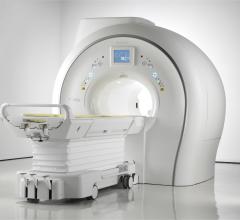New hope for cancer patients is building in North Texas as construction begins on the $105 million Texas Center for Proton Therapy, the first proton therapy center in the Dallas-Fort Worth Metroplex. The center, spearheaded by healthcare leaders Texas Oncology, The U.S. Oncology Network and McKesson Specialty Health, will have capacity to treat more than 100 patients per day when it opens in 2016.
Facilitating collaboration between radiologic technologists and radiologists to improve patient care, communication and quality improvement is one of the key safety recommendations outlined in a new white paper from the ASRT Foundation.
The U.S. Food and Drug Administration (FDA) granted 510(k) clearance to Medical Imaging Electronics (MiE) and Nuclear Imaging Services (NIS) ECAT Scintron. It is the only upgrade path available to the Siemens ECAT 47, ECAT HR+, and ECAT Accel positron emission tomography (PET) systems. The ACSII and SUN workstation are removed from the system and replaced with new PC-based technology that provides new and existing users of the ECAT series PET systems access to faster processing speeds, new acquisition protocols and parts availability. With improved reliability and longevity, the ECAT Scintron redefines the life cycle of dedicated PET systems in the U.S. market.
While most women understand the importance of health screenings, an estimated 72 million have missed or postponed a ...
Planmed Verity is designed to find subtle extremity fractures during the first visit to the clinic. Planmed Verity Extremity Scanner provides fast, 3-D imaging at the point of care. It is intended for pre- and postoperative imaging, and it has better resolution and patient adaptability and uses a significantly lower dose of radiation than full-body computed tomography (CT). Planmed Verity also allows for weight-bearing imaging of the extremities.
The American Society for Radiation Oncology (ASTRO) and the American Urological Association (AUA) have published a joint guideline on radiation therapy after prostatectomy for patients with and without evidence of prostate cancer recurrence. The 81-page document represents an intensive collaboration among experts in the radiation oncology and urology fields.

SPONSORED CONTENT — Fujifilm’s latest CT technology brings exceptional image quality to a compact and user- and patient ...
Positron Corp. announced the release of the PosiRx 3000-Series, its latest pharmacy automation systems. The PosiRx 3000-Series are the first systems to automate and encompass the complete compounding process, from generator elution to dose distribution, of multiple diagnostic SPECT agents in an environment engineered to be ISO Class 5 and USP 797 compliant. Designed for facilities dispensing as many as 300 patient-specific doses per day, the PosiRx 3000-Series will benefit providers and patients by enabling unit dose radiopharmaceuticals to be prepared more cost effectively and accurately than previously possible.
Fujifilm’s APERTO Lucent is a 0.4T mid-field, open MRI system addressing today’s capability and image quality needs ...
Elekta and Royal Philips Electronics announced that Sunnybrook Health Sciences Centre (Toronto, Canada) will join their growing consortium to validate the clinical potential of MRI-guided radiation therapy.
C.R. Bard Inc. has agreed to pay the federal government $48.2 million to settle a whistleblower lawsuit that alleges its urological division and wholly owned subsidiary, ProSeed Inc., paid doctors and hospitals kickbacks to entice them to order Bard's products at inflated prices to treat Medicare patients with prostate cancer.
McKesson Specialty Health announced today the launch of iKnowMed Generation 2, a powerful web-based electronic health record (EHR) developed in collaboration with oncologists. Drawing upon their daily clinical experiences, more than 200 physicians have come together to help create a system that advances the quality and efficiency of cancer care delivery.
SPONSORED CONTENT — Fujifilm’s latest CT technology brings exceptional image quality to a compact and user- and patient ...
In March, RaySearch Laboratories AB announced that version 3.5 of RaySearch's RayStation treatment planning system had been released for clinical use. RaySearch has now received 510(k) clearance from the FDA for RayStation 3.5 meaning that the new features can be marketed in the U.S.
The need to improve the efficiency and quality of X-ray examinations will drive healthcare facilities across Europe to install computed radiography (CR) and digital radiography (DR) systems. The emergence of retrofit systems based on flat panel technology has popularized DR systems, and will sustain investments in the European computed and digital radiography market.
Olympus announced the company's ultrasound endoscopes will now be powered by the ProSound F75 Ultrasound Processor.The ProSound F75 Ultrasound Processor, developed in partnership by Hitachi Aloka Medical Ltd., provides physicians with the highest quality imaging that aids in more accurate diagnosis of diseases of the gastrointestinal (GI) tract and surrounding organs such as the pancreas, bile duct, liver, spleen and gallbladder as well as assessing a variety of cancers. The newly introduced platform improves workflow from pre-examination to after examination for better data management and provides improved visualization for more accurate blood flow information.
SPONSORED CONTENT — EnsightTM 2.0 is the newest version of Enlitic’s data standardization software framework. Ensight is ...
For the third consecutive year hospital users have rated Hitachi Medical Systems No. 1 magnetic resonance (MR) vendor according to the Q1 2013 MD Buyline User Satisfaction Ratings Report. Hitachi MRI scanners also achieved the highest score in each of the six individual MD Buyline categories in the Q1 2013 report.
Heart IT has released its WebPaxUniversal Viewer as an addition to its product portfolio. The new system allows hospitals and clinics to add Web-based, fully diagnostic image viewing to their existing infrastructure for both radiology as well as complex moving cardiology images. The WebPax Universal Viewer offers the same Web-based, zero-footprint image viewing technology that was first developed and patented by Heart Imaging Technologies.

SPONSORED CONTENT — EnsightTM 2.0 is the newest version of Enlitic’s data standardization software framework. Ensight is ...
At least a few Europeans think ventilation MRI should be commonplace.
ECRI Institute released a report listing three key questions and the answers concerning breast-specific gamma imaging (BSGI; sometimes referred to as molecular breast imaging or MBI). The technology uses a specially designed gamma camera system to image the uptake of a tracer that emits gamma radiation (most commonly 99mtechnetium-sestamibi [MIBI]). MIBI is preferentially taken up by cancer tissue, and thus BSGI can be used to image breast cancer for a variety of clinical indications. Unlike X-ray mammography, BSGI is not affected by the density of breast tissue, and therefore it may be particularly useful for screening and diagnosis of breast cancer in women with dense breast tissue.
Even though the vast majority of cancer mortality is due to metastatic disease, clinical practice indicates that current imaging tools are capable of detecting large metastases (about 0.5-1 cm in size), but rarely detect the early spread of metastatic tumor cells. Unfortunately, by the time cancer metastasis becomes clinically evident with today’s imaging techniques, the metastatic disease has progressed at a late stage prohibiting early successful interventions such as surgery or radiation. This late detection results in an unfavorable long-term patient outcome. For example, the five-year survival rate of breast cancer patients sharply decreases from 98 percent in cases with localized primary lesions to 23 percent in cases of distant large metastases.
I can be more precise with the ATEC biopsy device,” explains Jason Gatewood, M.D., Lead Interpreting Radiologist at the Saint Luke’s South Hospital Goppert Breast Center. “I don’t have to force it, and that gives me more control of the needle allowing me to be precise.” Dr. Gatewood has experience with most of the biopsy devices available for ultrasound guidance, and prefers the ATEC vacuum-assisted breast biopsy device. “The ATEC biopsy device has multiple advantages which allow it to be used in any scenario for breast biopsy, including dense breasts, cystic masses, random masses and small lesions.”
Creating the world’s first and only simultaneous whole-body positron emission tomography/magnetic resonance (PET/MR) scanner was no small feat for Siemens Healthcare. But when my engineering colleagues and I began that long, arduous development process more than half a decade ago, we believed that if we succeeded in building such a system, they — specifically, the clinical community — would come.
The next generation of positron emission tomography (PET) imaging agents will herald an age when PET will eclipse single photon emission computed tomography (SPECT) as the “go to” modality for molecular imaging. It will do so by enabling personalized medicine through precision diagnostics, the ability to be delivered cost-effectively in a manner with less radiation to patients, by leveraging hardware advances already being commercialized, and by taking advantage of the extra throughput capacity present in the U.S. installed base of PET/CT scanners.

 May 17, 2013
May 17, 2013 
















